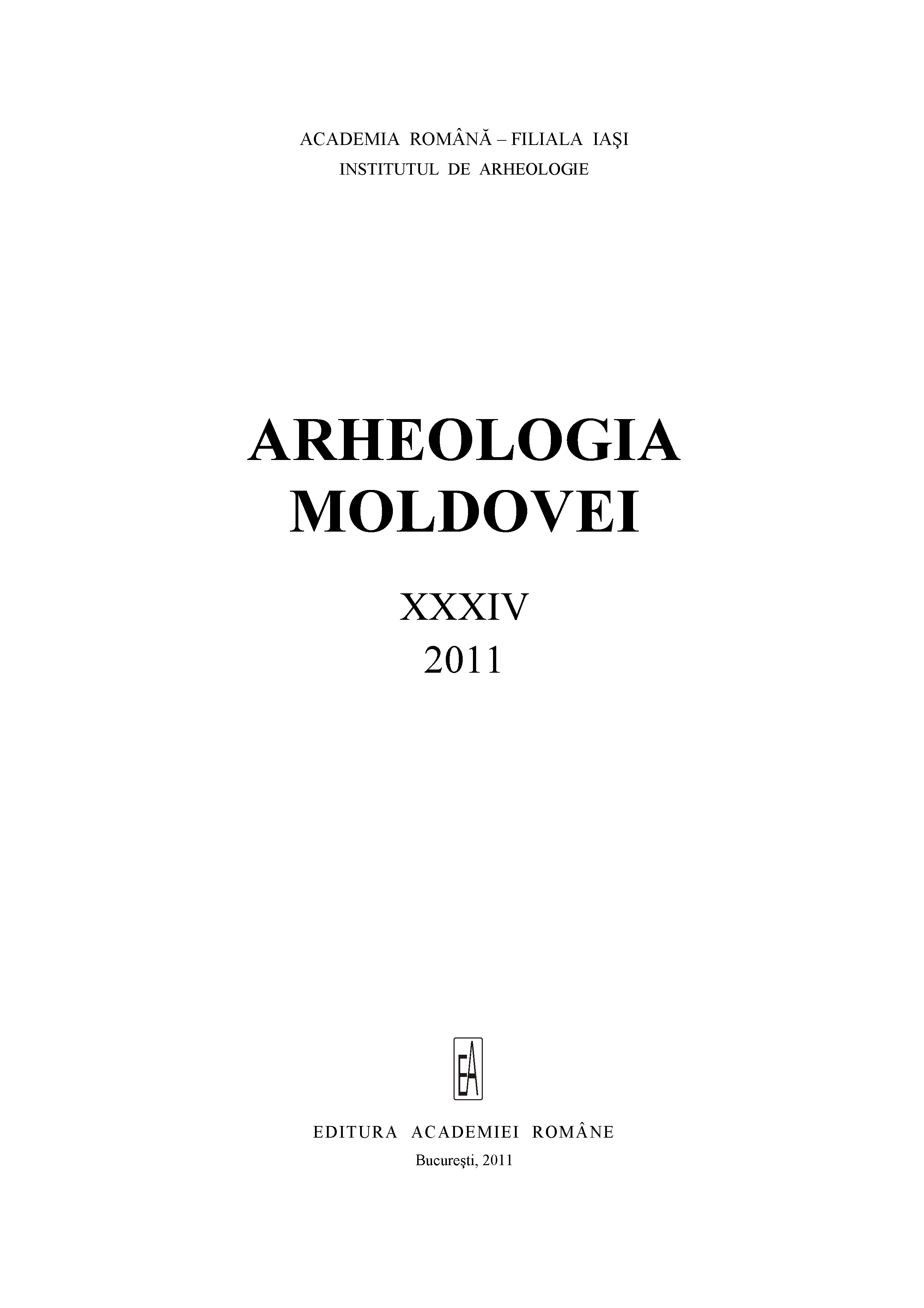PRACTICI FUNERARE BIRITUALE PRELUNGITE ÎN SPAŢIUL CARPATO-DUNĂREAN ÎN SECOLELE V–III A. CHR.
Bi-ritual funerary practices extended in the Carpathian-Danubian region during 5th-3rd century BC
Author(s): Mircea Babeş, Nicolae MiriţoiuSubject(s): History, Archaeology, Cultural history, Comparative history, Ethnohistory, Ancient World, Theology and Religion, Religion and science , Sociology of Religion, History of Religion
Published by: Editura Academiei Române
Keywords: Disposal of the dead; Prolonged burial practices; Provisional graves; Cremation; Inhumation; Biritualism; Carpatho-Danubian region; 5th–3rd c. B. C.; Getae; Thracians; Skythians; Agathyrsi
Summary/Abstract: The excavations carried out by the present authors in the Getic cemeteries at Boroseşti (Iaşi County) and Poieneşti (Vaslui County), dated to the 5th – 3rd c. BC, brought new data concerning funerary practices typical for this period; they consist mainly in the alternative use of inhumation and cremation during prolonged burial practices. Our starting point was the discovery of two funerary structures having the shape and dimensions of inhumation graves as well as grave goods, but lacking bones (at Boroseşti); at the same time were found graves with cremated bones laid in similarly over dimensioned pits, i.e. pits which had the sizes of inhumation graves (at Boroseşti, and especially at Poieneşti). This phenomenon is widely distributed, from Dniester (Nistru, Dnestr) to Tisza (Tisa) River; it is most clearly attested in the cemeteries from Slobozia-Oneşti, Stelnica, Zimnicea, Fântânele, Teliţa, Murighiol, Băiţa, Olteni(Romania), Dănceni and Pîrjolteni (Moldovian Republic), Szentes-Vekerzug and Tápiószele (Hungary). In these authors opinion, the large grave pits served initially as „provisional graves”; after some time, the corpses were exhumed and cremated, the cremated bones being afterwards either laid back in the initial pits or put in other places. When the latter was the case, in the former „provisional graves” – considered by some authors „cenotaphs” –, one can find remains of grave goods, but no bones. The outfit of the funerary structures with wood, stone and clay (e.g. at Dănceni, Zimnicea, Olteni, etc.) shows that they were accessible for the duration of the prolonged funerary practices, thus allowing for repeated ceremonies and ritual acts to take place at/in the graves. The existence of biritual, prolongued funerary practices is also attested by the ethnography of indigenous populations, both recent and contemporary.
Journal: Arheologia Moldovei
- Issue Year: 34/2011
- Issue No: 1
- Page Range: 103-149
- Page Count: 47
- Language: English, Romanian, French

